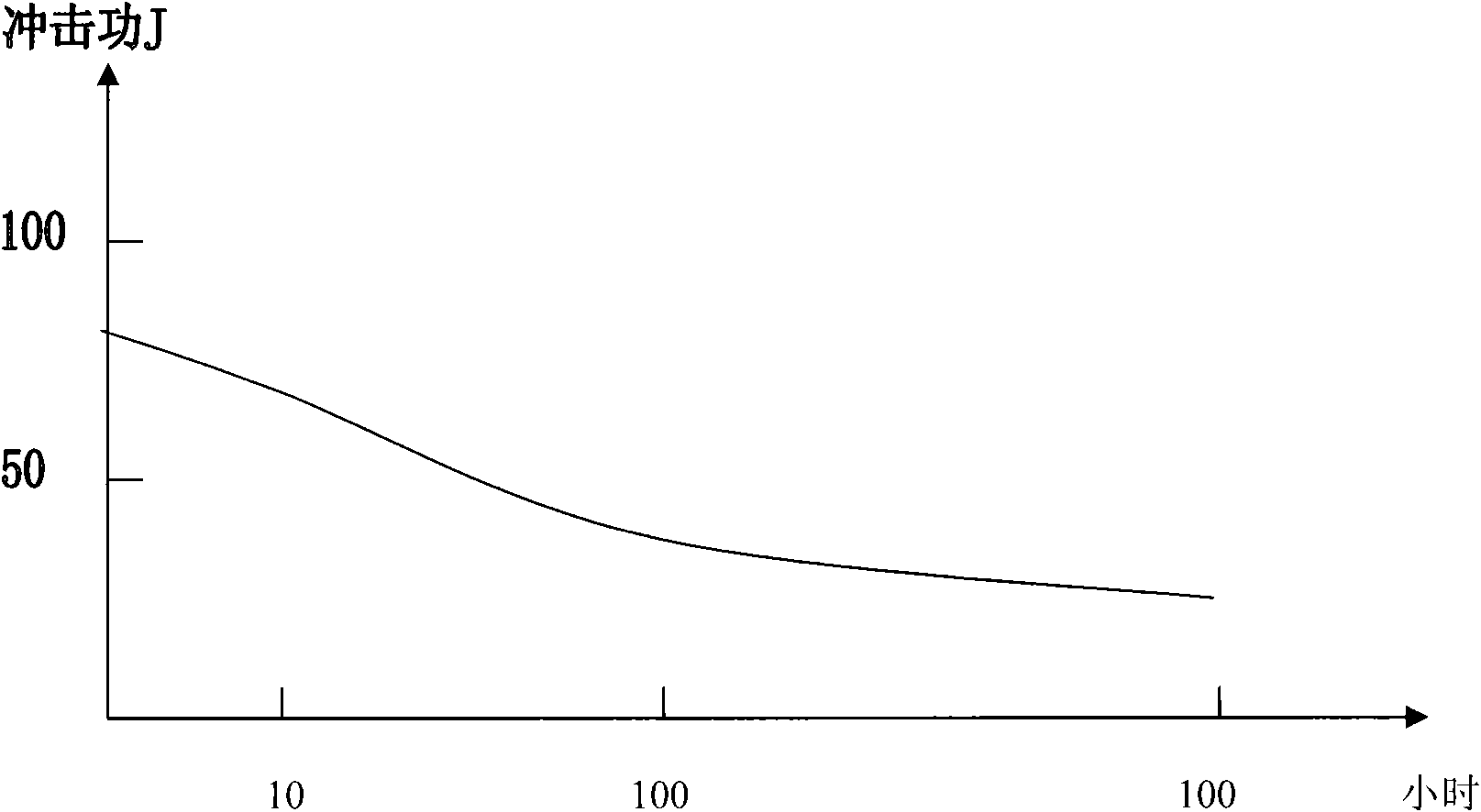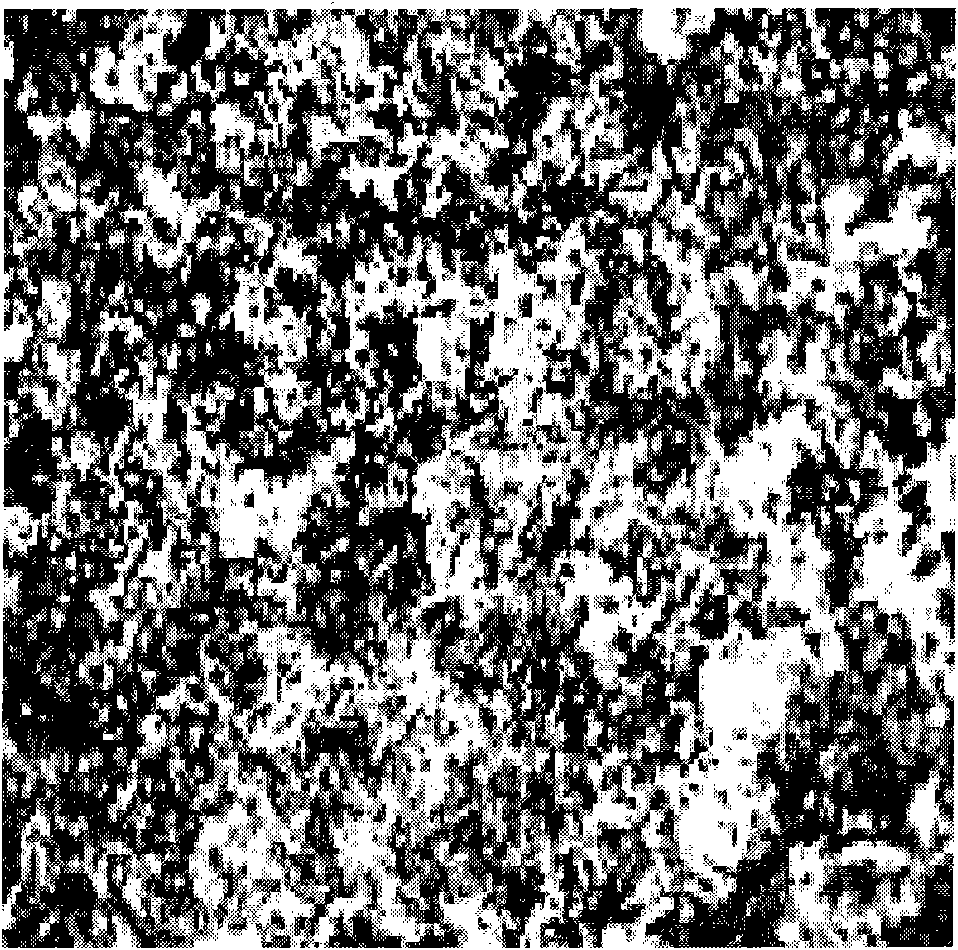2Cr13 heat treatment process
A 2cr13 technology, which is applied in the field of heat treatment of 2Cr13 materials for reciprocating compressors, can solve problems such as cracks, poor toughness, and low surface hardening hardness, and achieve the effects of improving wear resistance, increasing hardness, and reducing quenching cracks
- Summary
- Abstract
- Description
- Claims
- Application Information
AI Technical Summary
Problems solved by technology
Method used
Image
Examples
Embodiment 1
[0023] The specific steps of this embodiment are as follows:
[0024] (1) Conventional forging;
[0025] (2) Annealing: heat preservation at 860°C±10°C for 2 hours, cool to 350°C in the furnace and air cool to room temperature;
[0026] (3) Conventional machining;
[0027] (4) Quenching and tempering treatment: heat preservation at 960°C for 2.5 hours, cool the oil out of the furnace to 150°C, air-cool the oil to room temperature, transfer it to a tempering furnace and heat it to 660°C for 3 hours, and air-cool it to room temperature;
[0028] (5) Conventional semi-finishing: generally used for cutting when the geometric tolerance requirements of parts are relatively high, in order to leave a small machining allowance for finishing, it can be used flexibly according to the tolerance requirements of parts and the characteristics of processing materials;
[0029] (6) Stress relief treatment: stress relief treatment at 580°C to 590°C for 3 hours, then furnace cooled to room tem...
Embodiment 2
[0047] The difference from Example 1 is:
[0048](1) Conventional forging;
[0049] (2) Annealing: heat preservation at 860°C±10°C for 3 hours, cool in the furnace to 750°C±10°C, and air cool to room temperature;
[0050] (3) Conventional machining;
[0051] (4) Quenching and tempering treatment: keep warm at 970°C for 3.5 hours, cool the oil out of the furnace to 175°C, air-cool the oil to room temperature, transfer it to a tempering furnace and heat it to 675°C and keep it for 4.5 hours, then air-cool it to room temperature;
[0052] (5) Conventional semi-finishing: generally used for cutting when the geometric tolerance requirements of parts are relatively high, in order to leave a small machining allowance for finishing, it can be used flexibly according to the tolerance requirements of parts and the characteristics of processing materials;
[0053] (6) Stress relief treatment: Stress relief treatment at 580°C to 590°C for 4 hours, then furnace cooled to room temperature...
Embodiment 3
[0060] (1) Conventional forging;
[0061] (2) Annealing: heat preservation at 860°C±10°C for 4 hours, cool in the furnace to 750°C±10°C, and air-cool to room temperature;
[0062] (3) Conventional machining;
[0063] (4) Quenching and tempering treatment: heat preservation at 980°C for 5 hours, cool the oil out of the furnace to 200°C, air-cool the oil to room temperature, transfer it to a tempering furnace and heat it to 690°C for 6.5 hours, and air-cool it to room temperature after taking out the furnace;
[0064] (5) Conventional semi-finishing: generally used for cutting when the geometric tolerance requirements of parts are relatively high, in order to leave a small machining allowance for finishing, it can be used flexibly according to the tolerance requirements of parts and the characteristics of processing materials;
[0065] (6) Stress relief treatment: stress relief treatment at 580°C to 590°C for 5 hours, and then furnace cooled to room temperature;
[0066] (7) C...
PUM
| Property | Measurement | Unit |
|---|---|---|
| hardness | aaaaa | aaaaa |
Abstract
Description
Claims
Application Information
 Login to View More
Login to View More - R&D
- Intellectual Property
- Life Sciences
- Materials
- Tech Scout
- Unparalleled Data Quality
- Higher Quality Content
- 60% Fewer Hallucinations
Browse by: Latest US Patents, China's latest patents, Technical Efficacy Thesaurus, Application Domain, Technology Topic, Popular Technical Reports.
© 2025 PatSnap. All rights reserved.Legal|Privacy policy|Modern Slavery Act Transparency Statement|Sitemap|About US| Contact US: help@patsnap.com



